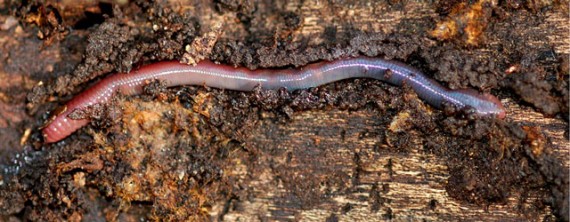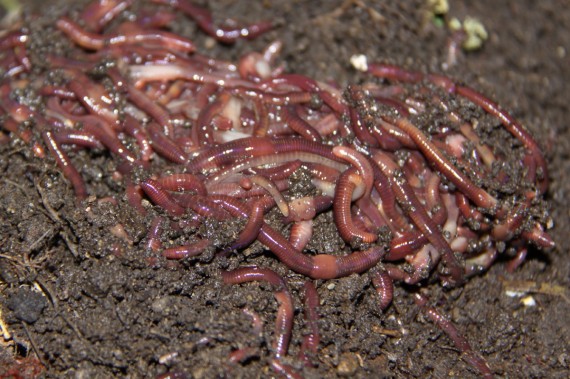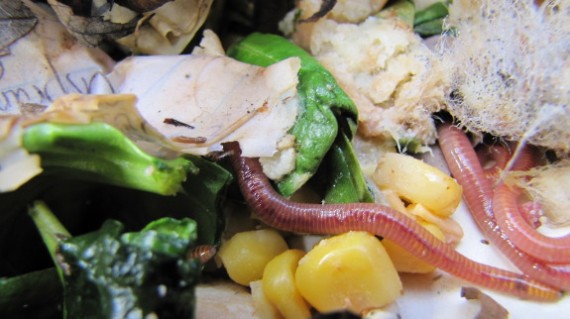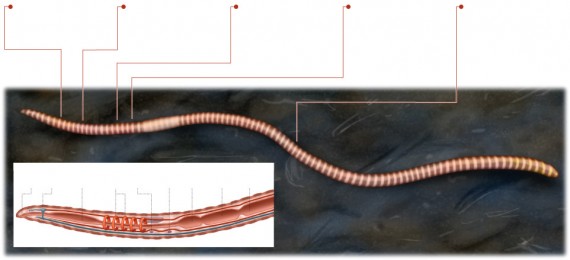Far from being a mere disgusting dirt-dweller or fish bait, earthworms come in handy for just about everything, and play a vital role in nature, to the point where the planet might not survive without them. Here, we unearth some of the most amazing facts about earthworms.
10. They’re Man’s Distant Relative
Meet your long-lost cousin – yes, a worm. Fossil evidence shows that wormlike creatures have been around for more than 500 million years. They even managed to live through mass extinction events 65 million years ago. In addition, a newly-released analysis proves that the simple-bodied organism, known as Xenoturbella, can be now regarded as one of the oldest known members of the deuterostomes, a branch of family tree containing all animals with a backbone, including human.
Although Xenoturbella lack a developed nervous system or gut, researchers at Cambridge University are convinced that the finger-sized creature shares the same genes with us. Proof that everyone truly does have that one weird relative.
9. They Take Care of the Earth for Us
19th century British scientist Charles Darwin, who conceptualized the theory of evolution, studied worms for a whopping 39 years. By the end of his study, he concluded that these deceptively simple creatures are valuable to Earth’s processes, and wrote a book called The Formation of Vegetable Mould through the Action of Worms, With Observations on Their Habitats in 1881, shortly before his death.
Darwin referred worms as “ploughs of the Earth,” because of their ability to aid the soil by feeding on decaying matter and ejecting rich byproducts containing partially digested materials as castings. He believed that worms were responsible for the enriching soil content, and therefore improving terrestrial vegetation. He surely loved his worms.
8. Luminescent Worms
Spenceriella gigantea, also known as North Auckland Worms, is another popular worm, though probably not in your backyard. This glow-in-the-dark, and surprisingly large, earthworm burrows a couple of meters beneath the ground of New Zealand. They can grow up to 4.5 feet, are 11 mm in diameter (just about as thick as your thumb) and give off a bright orange-yellow light at night. It is said to be so bright that you can actually read by its light. But the sad news is that they’re exceptionally frail, and rarely seen above the surface, so bring a book and a shovel.
7. You Can Absolutely Eat Them
Earthworms make a great snack, both for animals and humans too! You’ve probably seen people eating worms on reality TV shows, but have you ever asked yourself, “Can we really eat worm?” Over 3,000 species of these natural power bars have been identified, and most of them are considered safe for human consumption. Travel across some parts of Latin America, Africa and Asia, and you’ll find out that earthworms are considered a delicacy, and consumed by the locals on a regular basis.
If you were in a situation where you are facing starvation, these earthworms would be a good source of protein and minerals. Worms contain about 62.2% protein and 1.72% calcium comparable to the same amount of nutrients of cow’s milk. It is actually said that earthworms taste like bacon. Just make sure you clean the dirt off before consuming.
6. They’re All Over the Place, Even If We Don’t Want Them Around
There can be more than a million earthworms in one acre of land, or up to 23 earthworms per square foot. While they all do a great job enriching the forest soil, some places see an ever-growing population of worms as a problem. The worms have eaten all the decomposing vegetation and fallen leaves on the soil surface, called “duff.” And without it, some seeds won’t germinate. This also changes the drainage of the forest floor quickly, wiping out some native plant species and trees. These invasive worms are probably the offspring of discarded fishing bait.
Forests from Minnesota to Rhode Island are battling these offensive worms. These remote forests have been getting on just fine without worms since the Ice Ages. In the past few decades, forest floors have been decimated due to the arrival of these little wriglers. But don’t worry; scientists are working on ways to preserve and regenerate these forests.
5. They Live Longer Than You Think

Did you feel bad when your pet died? Well, here’s the good news — the average life span of an earthworm is 6 years, twice that of a mouse. An experiment found out that an earthworm culture, kept between 18-22°C at a constant pH of 5.0, can even live up to nine years. Eisenia andrei, or a common earthworm, had an average longevity of 4.25 years, and the oldest specimen reached 8.73 years. As long as they’re away from predators, they’re expected to grow even older in the wild. In theory, an earthworm could outlive your dog, though they’ll never be quite as cuddly and adorable.
4. They Will Eat Literally Anything
We are finally realizing just how worms can play a significant role in maintaining balance in our ecosystem: by eating anything that throws it off-balance. Earthworms can consume at least one-third of their body weight, depending on the type of food. Any material, as long as it is organic, can be part of their voracious diet. They will just feed on anything, including bacteria from decomposing material. That’s the main reason why they were able to eat discarded natural fiber — by ingesting the bacteria on fabric, they end up eating the cloth too. They also like pumpkins, cotton jeans, teabags, animal fur, meat, and even your stinky socks!
3. Some Have Two Tails, But No Head
Earthworms were able to easily replace or replicate lost segments of their bodies, though it varies by species, extent of damage, and place of the cut. Most segmented worms can easily generate a new tail, but if conditions are just not right, it will be very difficult to replicate a lost head. There are cases where a severed tail can oddly be replaced with a new tail segment instead of a head. The unfortunate twin-tailed worm can live for a short time even without the ability to feed, but will eventually die.
2. They Can Grow Larger Than You
Whereas most earthworms are just few inches long, certain ones can grow longer than your car! The South African Giant Earthworm, measured from its nose to the tip of its tail, can grow up to 22 feet, the largest known species among earthworms. According to the International Worm Digest digital archives, the record-setting specimen was found in 1967, beside a road in William’s Town, South Africa, where presumably nobody has dared travel since.
By the way, don’t start fretting, thinking that 20-foot worms are everywhere. That’s an anomaly; they normally only grow to about six feet.
1. You Can Make A Fortune Off of Them
The journey of the humble worm across the land sparked interests in using them to produce some of the richest farmland around the world. For that reason, there are about 120 species of earthworms currently being distributed around the globe. Canada alone has been exporting 370 million worms every year, reaching a gross export value of about $13 million, and a retail value of about $54 million.
The demand for these often-ignored, slimy creatures has been soaring high, as their castings produce nature’s most perfect organic fertilizer. Aside from vermicompost, worms can be sold as live food, micro-farming eco-landscaping agents, and basic fishing bait. You can easily turn a simple hobby into a unique business with these simple, slimy, yet utterly miraculous creatures.








